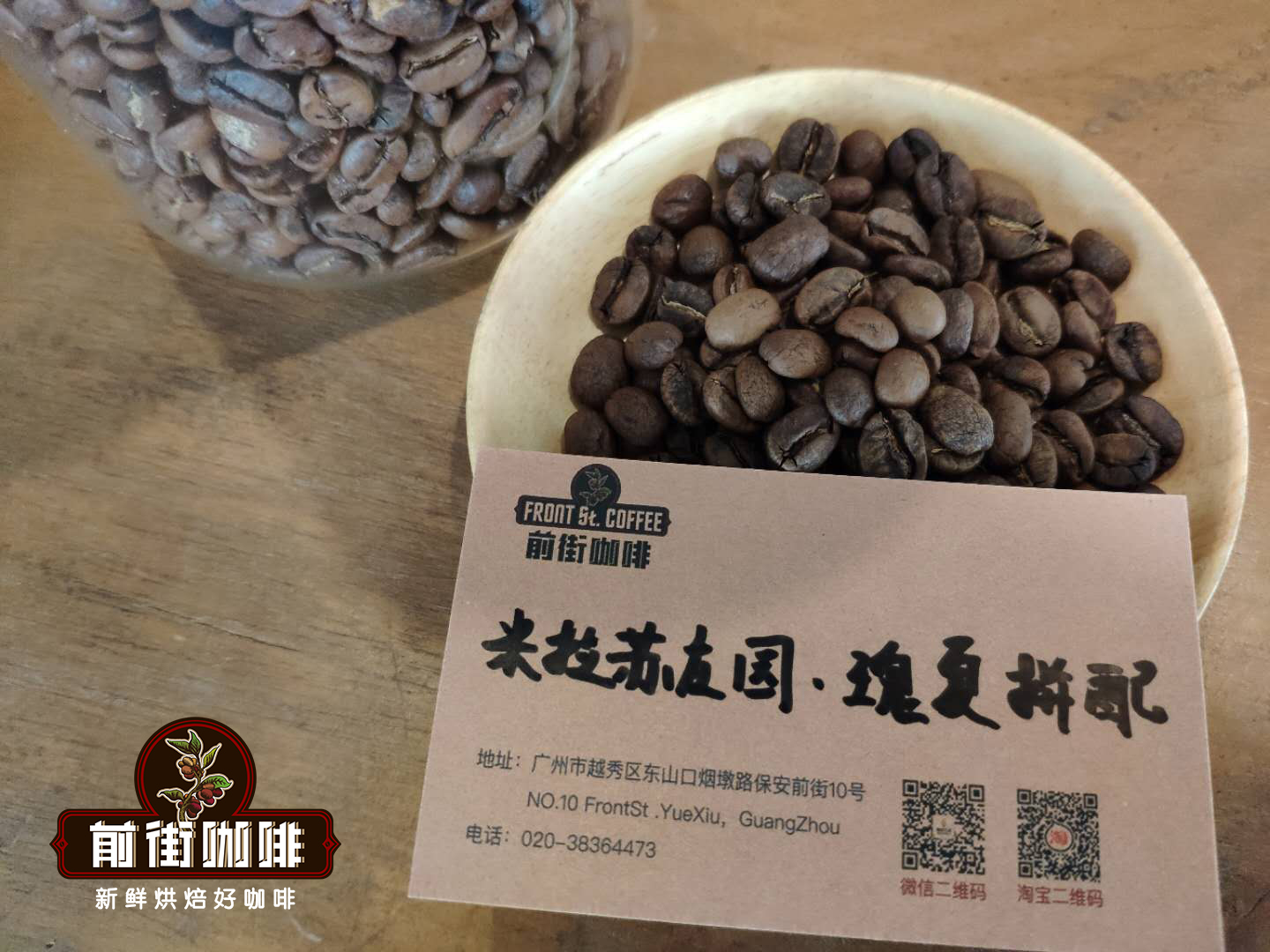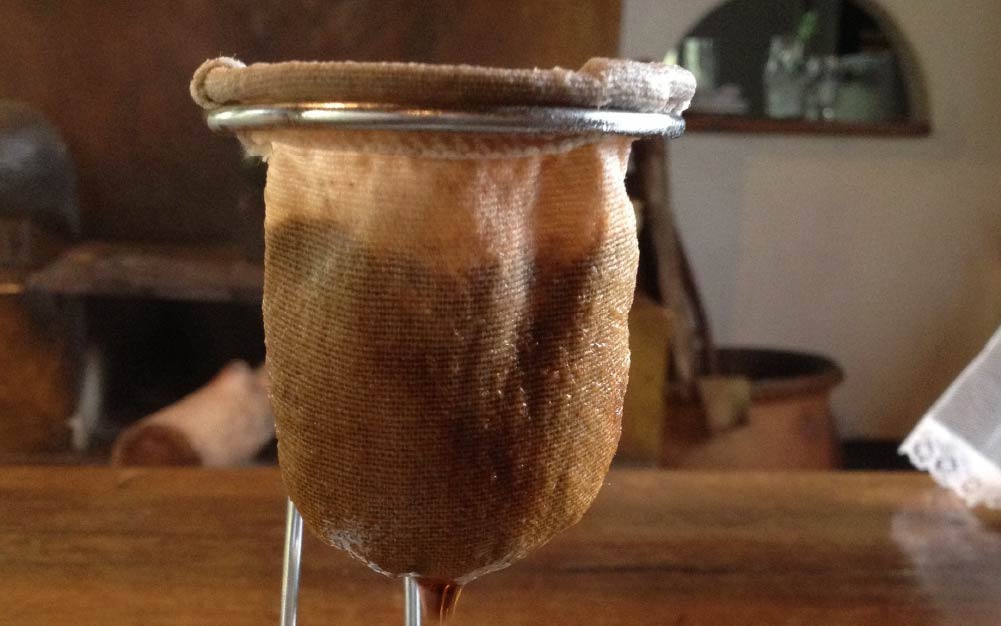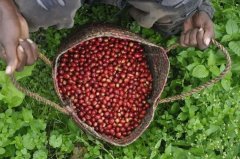What is treated with Costa Rican coffee honey? Introduction to the traditional way of brewing coffee in Costa Rica
Costa Rica produced more than 85 million kilograms of coffee last year. Since the 18th century, coffee has been grown in the country. Despite fluctuations in coffee exports in recent years, coffee remains an important component of Costa Rica's economy.
But beyond production, Costa Rica has a rich and unique coffee-consuming culture. The use of shredders to brew coffee is an example of this.
This brewing method is similar to the basic or historical filter coffee brewer, but is not known outside Costa Rica.

What is it?
Café chorreado is prepared using chorreador, a simple brewing device consisting of two main parts. These are vegetable slicer brackets and bolsita ("small bags")-fabric filters held in place with wires.
Brewing coffee with fabric filters is by no means exclusive to Costa Rica. It is also common in producing countries in South America and Asia. The treads are usually made of decorated and painted wood, while bolsita is a filter cloth usually made of cotton.
Heyner Varela is a baker and owner of ChocoCafé in Monteverde, Costa Rica. "[In Costa Rica, many people prefer coffee brewed this way because it's part of our culture…not because of the quality of the brew," he said.
While Heyner offers this brewing method in Choco Cafe, he told me that it's unlikely that people will see it in many third-wave coffee shops. But, he told me, when people do encounter it, they get curious and often want to try it.
Fabiola Solano is a barista and vice president of the Costa Rican Bartender and Barista Association. Because the device uses reusable cloth filters, it could become popular in cafes that aim to reduce waste, she said. "You can reuse them many times and they're very cheap," she told me.
Heyner agreed, but noted the importance of cleaning filters. As long as the individual filters are cleaned rigorously after each use, it can last up to a month, he said.
He said: "We clean it every time we use it. Eventually, we boil it, rinse it and keep it in the fridge to prevent bacteria from growing and to reduce the taste of the old coffee." He said the oil in coffee stains filters, so it can't be used indefinitely.
Brewing coffee with CHORREADOR
Fabiola and Heyner both use a ratio of water to coffee between 1:15 and 1:16, and grind to a moderate size, similar to the level you use to manually pour other beers. They both told me that the water temperature should be between 92 and 97ºC.
After carefully weighing the coffee and hot water, mix them in a pot to brew, and then slowly pour them into a filter cloth. For best results, Fabiola recommends that you stir the mixture slowly and constantly as you filter through bolsita. That prevents the ground from getting stuck on the sides of the filter, she said.

Heyner agrees that it is best to slow down, but winemakers should remember that filter cloth is much more porous than filter paper. As a result, the water flows quickly, increasing the risk of under-extraction and creating a light, bubbly coffee. Heyner recommends setting the total brewing time at 3 to 3 ½ minutes.
Heyner and Fabiola both agree that the ATM is travel-friendly. "You can improvise coffee stands," Heiner said. "All you need is wires and filters, and you can brew coffee anywhere."
CHORREADOR OF COSTA RICA
Although shredders were invented in Costa Rica, brewing coffee with "socks" is a more common practice. For centuries, coffee has been brewed with cloth and fabric filters in Latin America and Asia.
Fabiola and Heyner both told me that although Costa Ricans have adopted electric coffee pots and popular devices such as the Hario V60, shredders are still used in many homes. "People still love it because it's so traditional," Fabiola said.
For Heyner, the wine cutter created a simple and authentic beer tasting that reminded him of his childhood. Many Costa Ricans first introduced coffee using this device. "This is something every grandmother would offer you-something nostalgic," he said.
Fabiola agrees, noting that it is common for Costa Ricans to pass down knowledge of the brewing method from generation to generation.
Choppers are a tradition and an important part of Costa Rican coffee history. Its use and usage in many coffee-drinking households has been around for centuries, meaning that while it may not be sweeping the world, it will still be popular in certain communities in Costa Rica.
Interestingly, brewing coffee with a shredder (or filter cloth) also seems to be popular in coffee shops and among brewers keen to reduce the environmental impact of their coffee habits.
So if you're interested in brewing coffee without paper, or even trying traditional coffee brewing methods, consider investing in shredder stands and bolsita. If you are unfamiliar with it, it may be a unique new experience.
Important Notice :
前街咖啡 FrontStreet Coffee has moved to new addredd:
FrontStreet Coffee Address: 315,Donghua East Road,GuangZhou
Tel:020 38364473
- Prev

The unique Shachiso coffee bean brewing flavor in Sidamo, Ethiopia
Professional coffee knowledge exchange more coffee bean information Please follow the coffee workshop (Wechat official account cafe_style) mentioned the producing area of Sidamo, Ethiopia, I believe many people are no stranger to Guji. The Huakui coffee beans produced by Humbela in Guji are well known, winning the Ethiopian coffee competition from the Huakui coffee beans from the Humberabuku processing plant in 2017.
- Next

Kongjia Cooperative with Fair Trade and Organic cultivation Certification Kongjia Coffee Bean Flavor
Professional coffee knowledge exchange more coffee bean information please follow Coffee Workshop (Wechat official account cafe_style) there are different cooperatives in Ethiopia coffee producing areas, each of which helps coffee farmers in a region to better grow and sell their own coffee beans. In this article, Qianjie continues to talk about the cooperatives in the Yegashifi producing area, which have fair trade and
Related
- Beginners will see the "Coffee pull flower" guide!
- What is the difference between ice blog purified milk and ordinary milk coffee?
- Why is the Philippines the largest producer of crops in Liberia?
- For coffee extraction, should the fine powder be retained?
- How does extracted espresso fill pressed powder? How much strength does it take to press the powder?
- How to make jasmine cold extract coffee? Is the jasmine + latte good?
- Will this little toy really make the coffee taste better? How does Lily Drip affect coffee extraction?
- Will the action of slapping the filter cup also affect coffee extraction?
- What's the difference between powder-to-water ratio and powder-to-liquid ratio?
- What is the Ethiopian local species? What does it have to do with Heirloom native species?

